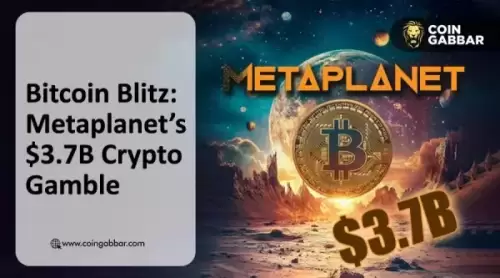 |
|
 |
|
 |
|
 |
|
 |
|
 |
|
 |
|
 |
|
 |
|
 |
|
 |
|
 |
|
 |
|
 |
|
 |
|
過去1か月間、Defiフィールドは静かに構造的な変化を起こしたようです。以前の独立操作とは異なり

Over the past month, the DeFi field seems to have quietly undergone structural changes. Unlike the previous independent operations, some leading protocols are moving towards "grouping" through cooperation, integration, and even direct interest binding.
過去1か月間、Defiフィールドは静かに構造的な変化を起こしたようです。以前の独立操作とは異なり、一部の主要なプロトコルは、協力、統合、さらには直接的な関心拘束力を通じて「グループ化」に向かっています。
In this article, we will start from the three sections of lending and trading integration, stablecoin landscape evolution, and RWA integration, sort out the most representative "group actions" at present, and analyze the logical changes and potential impacts behind them.
この記事では、融資と取引統合の3つのセクション、Stablecoin Landscape Evolution、およびRWA統合から始めて、現在最も代表的な「グループアクション」を整理し、その背後にある論理的な変化と潜在的な影響を分析します。
Lending + Trading: Binding of Interests between Protocols
貸出 +取引:プロトコル間の関心の拘束力
The cooperation between DeFi protocols is moving from superficial asset integration to deeper structural integration. The recent linkage between Uniswap and Aave is a representative of this trend.
Defiプロトコル間の協力は、表面的な資産統合からより深い構造統合に移行しています。 UniswapとAaveの最近のリンクは、この傾向の代表です。
The core upgrade of Uniswap V4 is not to save gas, but to introduce the Hook mechanism. It allows developers to insert custom logic in key links of the liquidity pool (such as adding or removing liquidity, before and after transaction execution), implement whitelist control, dynamic rates, customized price curves, and even embed game rules. This allows Uniswap to evolve from a trading protocol to a more open liquidity infrastructure.
Uniswap V4のコアアップグレードは、ガスを節約することではなく、フックメカニズムを導入することです。開発者は、流動性プールの重要なリンクにカスタムロジックを挿入し(トランザクションの実行前後の流動性の追加または削除など)、ホワイトリスト制御、動的レート、カスタマイズされた価格曲線、さらにはゲームルールを埋め込んでいます。これにより、UNISWAPは取引プロトコルからよりオープンな流動性インフラストラクチャに進化することができます。
Based on this, Aave plans to support Uniswap V4's LP Token as collateral for lending, and return part of the interest on the loaned stablecoin GHO to Uniswap DAO. The two have formed a substantial bond in terms of assets, functions, and returns. This cooperation improves the efficiency of LP's use of funds and provides a more realistic template for the complementary relationship between protocols.
これに基づいて、AaveはUniswap V4のLPトークンを貸付の担保としてサポートし、貸し出されたStablecoin Ghoの関心の一部をUniswap Daoに返すことを計画しています。 2人は、資産、機能、および返品に関して実質的な債券を形成しました。この協力は、LPの資金の使用の効率を改善し、プロトコル間の補完的な関係により現実的なテンプレートを提供します。
Judging from market data, this "grouping effect" is sending positive signals. Since May, Aave's TVL has risen from $19.708 billion to $23.347 billion, an increase of more than 18%. Uniswap's TVL also increased by about 11% during the same period, from $4.178 billion to $4.65 billion. It may not be a coincidence that both are strengthening at the same time.
市場データから判断すると、この「グループ化効果」は正の信号を送信しています。 5月以来、AaveのTVLは19708億ドルから233億4,700万ドルに増加しており、18%以上増加しています。 UniswapのTVLは、同じ期間に約11%増加し、41億7,800万ドルから46億5,000万ドルに増加しました。両方が同時に強化されているのは偶然ではないかもしれません。
Stablecoins: A new stage of differentiation and specialization
Stablecoins:差別化と専門化の新しい段階
The competition in the stablecoin market is no longer limited to "who is more centralized" or "who has higher returns." More protocols are pushing stablecoin products toward professional use and structural stratification.
Stablecoin市場での競争は、もはや「誰がより集中化されている」または「誰がより高いリターンを持っているか」に限定されません。より多くのプロトコルが、Stablecoin製品を専門的な使用と構造的層別化に向けてプッシュしています。
Take Ethena as an example. Currently, the most active stablecoin in its ecosystem is USDe, which is deeply integrated with Aave and supports a maximum loan-to-value ratio (LTV) of 90%. However, since May, the TVL of USDe has dropped from $5.725 billion to $4.993 billion, a drop of nearly 13%.
例としてエセナを取ります。現在、その生態系で最も活発なスタブコインはUSDEであり、これはAaveと深く統合されており、90%の最大ローンと価値比(LTV)をサポートしています。ただし、5月以来、USDEのTVLは57億2,500万ドルから4.993億ドルに減少し、13%近く減少しました。
Behind this, Ethena is launching another more conservative new product, USDtb.
この背後にあるエセナは、別のより保守的な新製品であるUSDTBを発売しています。
USDtb is a non-yielding but fully collateralized stablecoin, with assets consisting of BlackRock's tokenized money market fund (BUIDL) and USDC. The current on-chain supply exceeds $1.44 billion, and the collateralization rate remains at 99.4%. Unlike the strategic hedging of USDe, USDtb is more like an "on-chain dollar", providing institutions with a reliable, non-volatile stable anchor. Especially when negative funding rates appear in the market, Ethena can transfer USDe's hedging funds to USDtb to stabilize the entire asset pool structure.
USDTBは、BlackRockのトークン化マネーマーケットファンド(BUIDL)とUSDCで構成される資産を備えた、無量ではあるが完全に担保されたStablecoinです。現在のチェーン供給は14億4,000万ドルを超え、担保率は99.4%のままです。 USDEの戦略的ヘッジとは異なり、USDTBは「オンチェーンドル」に似ており、信頼できる、不揮発性の安定したアンカーを機関に提供します。特に、マイナスの資金調達率が市場に登場する場合、エセナはUSDEのヘッジファンドをUSDTBに譲渡して、資産プール構造全体を安定させることができます。
Another variable in the stablecoin landscape is USDT₀. This full-chain stablecoin launched by Tether and LayerZero is circulated based on the OFT protocol. It has now expanded to multiple chains such as Arbitrum, Unichain, and Hyperliquid. Its TVL also increased from US$1.042 billion to US$1.171 billion in May. In contrast, its goal is not financial innovation, but to open up multi-chain liquidity and become a stable "fuel" in DeFi.
Stablecoinランドスケープのもう1つの変数はusdt₀です。 TetherとLayerzeroによって打ち上げられたこのフルチェーンのスタブコインは、OPTプロトコルに基づいて循環します。現在、Arbitrum、Unichain、Hyperquidなどの複数のチェーンに拡大しています。また、TVLは5月の10億4,200万米ドルから11億7,100万米ドルに増加しました。対照的に、その目標は金融革新ではなく、マルチチェーンの流動性を開き、Defiの安定した「燃料」になることです。
The competition in stablecoins is no longer a one-dimensional efficiency war, but has evolved into a structured and scenario-based product system. Products such as GHO, USDe, USDtb, and USDT₀ occupy positions in the fields of lending, hedging, security, cross-chain, and payment, respectively, reflecting that the stablecoin ecosystem is undergoing a reshuffle of "functional specialization" and "clarification of application scenarios."
Stablecoinsでの競争はもはや一次効率戦争ではありませんが、構造化されたシナリオベースの製品システムに進化しました。 GHO、USDE、USDTB、USDT₀などの製品は、それぞれ貸出、ヘッジ、セキュリティ、クロスチェーン、および支払いの分野で位置を占めています。
RWA: On-chain integration of real-world assets
RWA:現実世界の資産のチェーン統合
RWA, once regarded as a "traditional financial appendage", is now becoming a strategic entry point for DeFi giants. In the past few months, multiple protocols and organizations have formed a clear trend of grouping around tokenized U.S. Treasury bonds and have begun to deploy them on the chain.
かつて「伝統的な金融付属物」と見なされていたRWAは、現在、Defi Giantsの戦略的エントリポイントになりつつあります。過去数か月で、複数のプロトコルと組織が、トークン化された米国財務省の債券を中心にグループ化する明確な傾向を形成し、チェーンにそれらを展開し始めました。
The most representative case is Arbitrum DAO. On May 8, the community passed a proposal to allocate 35 million ARB to three RWA issuance platforms: Franklin Templeton ($BENJI), Spiko ($USTBL), and WisdomTree. These
最も代表的なケースはarbitrum daoです。 5月8日、コミュニティは、3500万のARBを3つのRWA発行プラットフォームに割り当てる提案を可決しました:フランクリンテンプルトン($ Benji)、Spiko($ USTBL)、およびWisdomTree。これら
免責事項:info@kdj.com
提供される情報は取引に関するアドバイスではありません。 kdj.com は、この記事で提供される情報に基づいて行われた投資に対して一切の責任を負いません。暗号通貨は変動性が高いため、十分な調査を行った上で慎重に投資することを強くお勧めします。
このウェブサイトで使用されているコンテンツが著作権を侵害していると思われる場合は、直ちに当社 (info@kdj.com) までご連絡ください。速やかに削除させていただきます。
-

- Coindcx、Coinbase、およびCyber Heists:暗号ジェットコースター
- 2025-08-02 12:05:15
- CoindCXのコインベースの獲得の否定に関する最新情報を探索してください。
-

-

-

-

-

-

-

-





























































